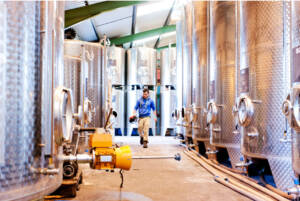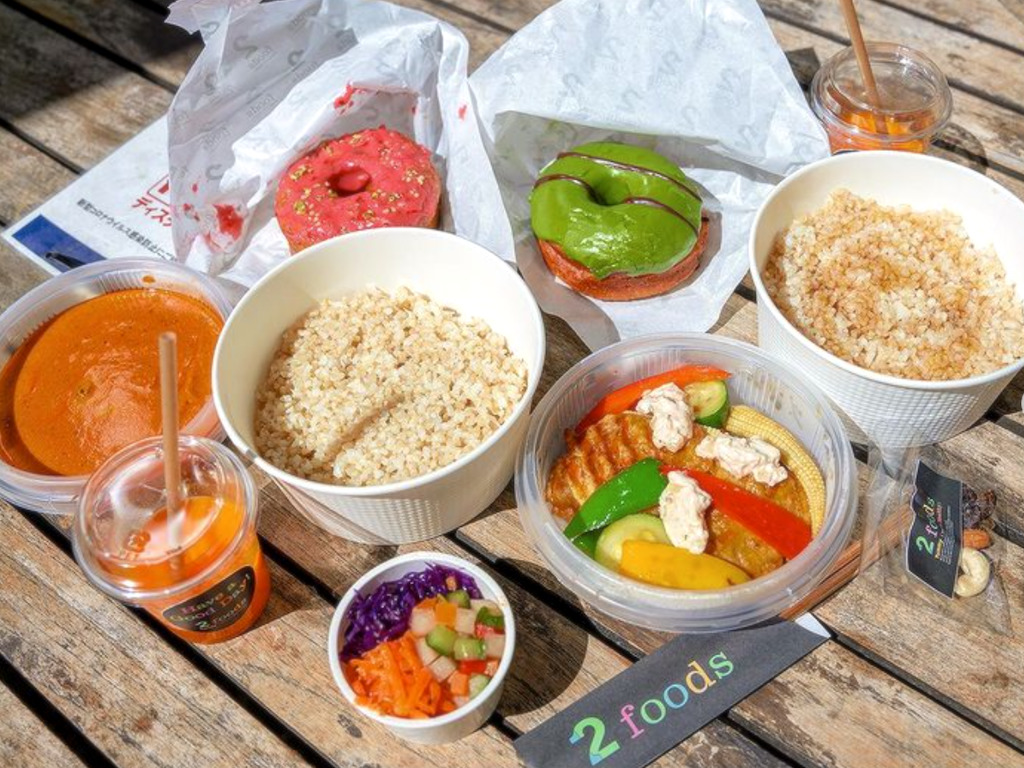FORWARD FOODING
THE BLOG
WTF – What’s The Fermentation: Decoding Precision Fermentation

It’s unlikely that you haven’t heard of precision fermentation, the new technology coined as the “most important green technology” that is expected to rival basic commodities such as cheese, milk and even possibly meat; but precision fermentation can be a little difficult to understand. Terms like “microbes” and “bioreactors” are often thrown around with overly technical terminology that can make your head spin.
At its core, precision fermentation is a revolutionary technology that enables us to create essential food components, like proteins, enzymes and other molecules, without the need for traditional agriculture. In other words, it’s a high-tech way of producing the building blocks of our favourite foods without relying on cows, chickens, or vast fields of crops.
In this article, we’re here to help you gain a better understanding of precision fermentation, demystify the science behind it, and shed light on why it’s gaining so much attention in the world of sustainable food production.
Before we dig into the step-by-step process of precision fermentation, let’s look at some numbers.
Exploring Precision Fermentation: Market Trends and Environmental Implications
According to the FoodTech Data Navigator, there are 95 startups and scale-ups specialising in precision fermentation across the world. Precision fermentation is definitely gaining momentum, with more than 50 precision fermentation companies founded since 2020.
The global precision fermentation market was valued at USD 1.93 billion in 2022 and is poised to reach approximately USD 63.85 billion by 2032, with a compound annual growth rate (CAGR) of 41.89% during the forecast period from 2023 to 2032.
Arguably, one of the most remarkable facets of precision fermentation lies in its environmental benefits. For instance, when precision fermentation incorporates methanol, it requires a mere 1,700 times less land than the most efficient agricultural means of protein production, such as soy cultivation in the United States. In comparison to the least efficient methods, such as beef and lamb production, it holds the potential to reduce land usage by a staggering 138,000 to 157,000 times.

Back to technology! Let’s see how it differs from other types of fermentation (such as biomass fermentation and traditional fermentation).
How Is Precision Fermentation Different From Traditional and Biomass Fermentation?
- Traditional Fermentation: Think of this as the age-old practice of using natural microbes to transform basic ingredients into beloved foods and beverages, like yeast turning sugars into beer or cheese cultures doing their magic to milk. It’s a process that’s been around for centuries.
- Biomass fermentation: Here, we capitalise on the rapid growth and protein-rich nature of microorganisms to make protein-packed foods. What makes it even more fascinating is that these microorganisms, as they multiply during fermentation, become the key building blocks for crafting alternative protein products.
- Precision Fermentation: This is where the game changes. Precision fermentation goes beyond relying on natural microbes; it involves tweaking the DNA of selected microorganisms to produce a specific molecule that they wouldn’t naturally make (animal proteins, enzymes, fats).
Cracking the Code: How Precision Fermentation Functions
Let’s break it down into five essential steps:
1. Select a Microbe
The journey starts by choosing a microbe that can efficiently produce the desired molecule. These microbes can be bacteria, yeast, micro-algae, or fungi – each with its advantages and disadvantages depending on what you’re aiming to create.
For instance, bacteria have a relatively short period of time to double in size, in comparison to yeast or micro-algae. However, yeast and fungi can tolerate higher ranges of temperature, pH, salt, etc.

2. Modify the Microbe
This step is all about genetic modification. We modify the microbe’s DNA, instructing it to produce a specific protein or molecule. Think of DNA as the ultimate recipe book; modifying it means creating a new dish. How is this done? It’s pretty technical, so all you need to remember is precision fermentation modifies microbial DNA to produce various products such as dairy and meat proteins.

3. Select the Feedstock
The feedstock serves as the fuel for the fermentation process. It can be derived from various sources, including byproducts of the food industry, agricultural crops rich in carbohydrates, or even post-consumer organic food waste. The choice depends on factors such as the microbe, cost and its impact on the final product.

4. Grow the Microbe
This is where the microbes thrive and do their magic. They’re placed in a bioreactor, a controlled environment that provides the right conditions for their growth (temperature, lighting and pH). The time it takes for the product to be made depends on various factors, for instance what you’re trying to produce, the chosen microbe, and the feedstock.

5. Recover the New Product
Once the microorganisms have produced enough of the desired product, it’s time to extract it. This is a difficult process, requiring careful separation of the microbes from the product. But when it’s all said and done, you’re left with a valuable product that can be used as a foundational ingredient for making a variety of foods, from meat alternatives to dairy products and beyond.

Some companies working on this technology

Important Takeaways
- Precision fermentation is a groundbreaking technology with a profound impact on the business landscape and environmental sustainability.
- Its effects are evident in funding growth, market size projections, growth rates within the alternative protein industry, and environmental advantages.
- While precision fermentation has the potential to produce high-quality ingredients, it does not aim to replace traditional protein sources such as meat and dairy. Instead, precision fermentation is expected to produce ingredients that significantly improve existing alternatives on the market today, including plant-based, plant-based 2.0, and mycoprotein-based products.
- According to the Guardian, the precision fermentation process yields flour with an impressive protein content of 60%. This far surpasses the protein content found in major crops like soybeans (37%) and chickpeas (20%).
- Despite its immense promise, scaling up precision fermentation is not without its challenges. Three primary hurdles include achieving cost-competitive sustainable protein compared to traditional sources, securing a consistent supply of bioreactors, and navigating regulatory complexities.
Interested in Sharing this Journey with Your Community?
Discover all our current FoodTech Explained graphics right HERE ready for you to share on your website or social media.
Do you have any recommendations for step-by-step explanations in food tech images, or would you prefer us to explore a different technology? Feel free to reach out to us at info@forwardfooding.com.
Follow us
Sponsored Articles
8 February 2024
Future Food-Tech returns to San Francisco on March 21-22 Over 1,700 food-tech leaders, from CPG brands, retailers, ingredient providers, [...]
1 February 2023
The 4th edition of FoodTech 500 is taking off and we are excited to partner with NEOM for the third consecutive year to support the best international AgriFoodTech entrepreneurs.
10 February 2022
One of the elements we enjoy the most here at Forward Fooding about working with AgriFoodTech startups is being [...]
4 January 2022
At Forward Fooding, we believe in the power of innovation and collaboration to power the food tech revolution and transform [...]
27 April 2021
TWO Inc, a Tokyo-headquartered wellness company, has just launched its new “healthy junk food” concept to offer Japanese consumers nutritious [...]






